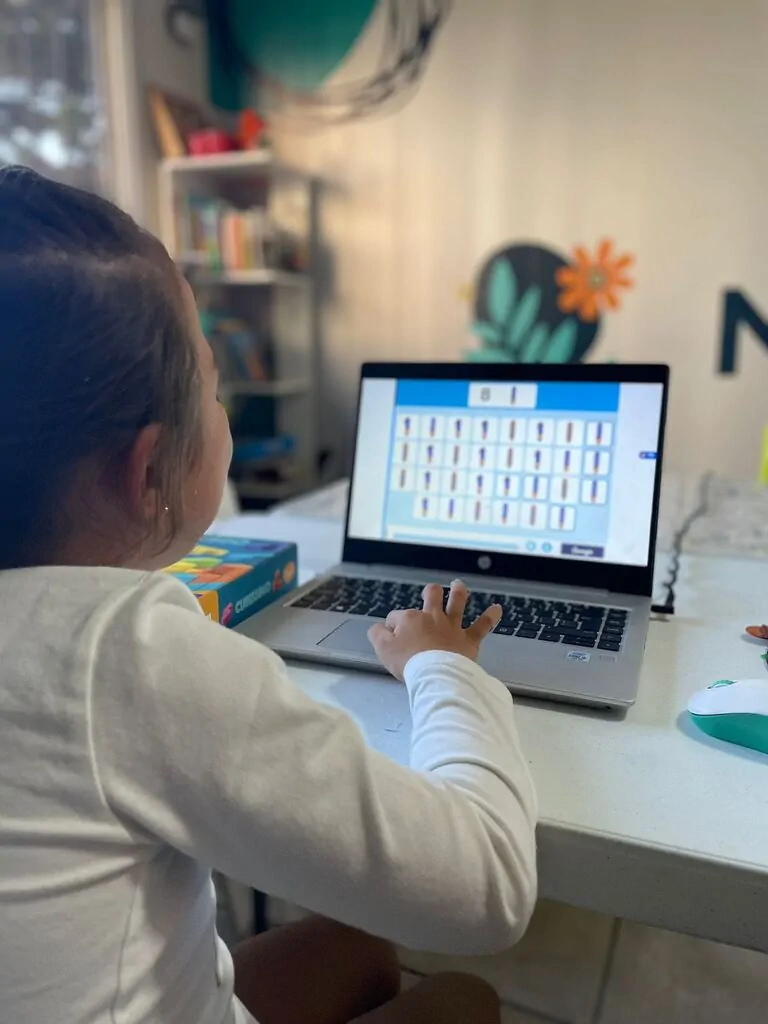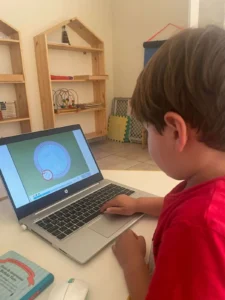In this post, María Fernanda Luna explains the advantages that the NeuronUP platform has provided when carrying out interventions with her patients effectively and aimed at enhancing each person’s cognitive abilities.
Brainkare
With eight years of experience since we opened the doors of our psychopedagogical center, we have been committed to providing comprehensive care to our patients.
Specializing in the treatment of neurodevelopmental disorders, especially learning disorders and autism spectrum disorders, attention deficit hyperactivity disorder (ADHD), as well as in the management of cognitive impairments associated with diseases such as Alzheimer’s and Parkinson’s, we have strived to find tools that optimize the outcomes of our therapies and that patients can develop their maximum potential.
On this journey of continuous improvement, we have found in NeuronUP an invaluable ally for our therapies. This platform has allowed us to structure and organize our cognitive training sessions efficiently, adapting to the specific needs of each of our patients, and providing quality exercises.
Cognitive stimulation: A driver for enhancing cognitive skills
When talking about cognitive stimulation, Sara Villalba and Raúl Espert (2014) define it as the set of techniques and strategies that aim to optimize the efficiency of the functioning of the different cognitive functions (perception, attention, reasoning, memory, language, orientation processes, praxis, among others) through a series of specific situations and activities that are structured and organized to carry out what are called cognitive training programs. Cognitive stimulation leads to an improvement in cognitive processes, providing a better quality of life and personal satisfaction.
This therapeutic intervention acts on the cognitive skills that show a significant deviation from what is expected for a given age and is based on the power of our brain’s neuroplasticity, each person’s cognitive reserve, the capacity for learning, and the redundancy of brain systems (Sara Villalba and Raúl Espert, 2014).
Our brain already has the capacity to adapt based on the stimuli it faces. Therefore, it depends on us, the therapists, to be able to clearly define the goals, properly assess the deficient cognitive skills and have good tools to maximize our patients’ abilities. It is essential to rely on tools and activities with a scientific basis to provide quality care.

Subscribe
to our
Newsletter
Flexibility and adaptability: Addressing diversity
Since our beginnings, we have faced the reality that each person is unique and presents different needs even though they may share the same diagnosis. Each person has cognitive strengths and weaknesses that allow us to identify the areas we want to enhance. This uniqueness of people means that each therapy must be personalized, designed and adapted to the particular conditions of each individual.
NeuronUP has provided us with the flexibility needed to adapt our treatment plans to the particularities of each individual. Initially in 2016, we focused on serving children and young people with different needs.
For example, when working with a child with an ADHD diagnosis, we must take into account several cognitive skills that are important to address depending on their difficulties. Following the attention model of Sohlberg and Mateer, it is necessary to consider which levels of attention need to be reinforced in that particular patient (sustained, selective, alternating attention, etc.), which executive functions are weakened, how fast their processing speed is, and what other cognitive skills may be hindering that patient from reaching their maximum potential. With all these particularities, it is necessary to work on what each person needs and, with NeuronUP, one can find activities for each of the cognitive skills, forming a personalized session and addressing the specific objectives that each professional has set.
Over time we have expanded our care to include adults with various diagnoses, including patients with cognitive impairment. With this population, needs are also very diverse, but by clearly identifying the cognitive weaknesses, it is possible to plan the exercises necessary to work on those areas.
With adult patients, the platform has given us the possibility of proposing engaging activities according to each patient’s conditions, working different types of memory, different executive function skills, language, perception, etc. The activities adapt based on age and level, which facilitates delivering therapy effectively to each individual patient.

Organization and planning: Optimizing time
NeuronUP has also simplified our work as professionals by providing us with tools to organize and plan our sessions efficiently. The ability to schedule sessions forces us as professionals to think about what goals we intend to achieve with each session and to select each activity appropriately according to the cognitive processes to be worked on.
One of the multiple factors that determine the effectiveness of a cognitive training program is its duration, as described by Muñoz Marrón, Elena, et al in the book ‘Estimulación Cognitiva y Rehabilitación Neuropsicológica’. The number of sessions planned must be sufficient to allow the patient to establish new learnings, consolidate them and generalize them to other everyday life situations. That is why, with NeuronUP, the time of each session can be adjusted, allowing each activity to be lengthened according to the objectives set. Consolidated learning can be observed as the patient repeats the same exercise and, after a certain number of correct attempts, can advance to a higher difficulty level.
It is worth adding that the ability to visualize the sessions performed on a calendar provides a better overview of what has been worked on with the patient and how, session by session, they can progress in the different activities.
In conclusion, to optimize cognitive stimulation therapies aimed at enhancing a patient’s cognitive skills, many elements are required on the part of the therapist. It is important to recognize that each person is unique, with a specific situation, at a particular stage of treatment, in a given environment and personality — all of which come into play when planning cognitive training sessions. For this reason, it is important to rely on tools that provide exercises and games backed by scientific evidence that optimize the time and effectiveness of therapy.
NeuronUP has become a fundamental pillar at Brainkare, enhancing our therapies and allowing us to offer a more complete service adapted to the individual needs of each patient. Its flexibility, innovative activities and organizational capacity have transformed the way we approach cognitive training, delivering tangible and meaningful results in the development and quality of life of those who trust us for their care.
Bibliography
- Villalba Agustin, Sara, and Raul Espert Tortajada. “Dialnet Estimulacioncognitivaunarevisionneuropsicologica 5149523.” Scribd, Scribd, July 2014, www.scribd.com/document/360413629/Dialnet-EstimulacionCognitivaUnaRevisionNeuropsicologica-5149523.
- Muñoz Marrón, Elena, et al. “Estimulación Cognitiva y Rehabilitación Neuropsicológica.” Academia.Edu, October 2009, www.academia.edu/39702937/Estimulaci%C3%B3n_cognitiva_y_rehabilitaci%C3%B3n_neuropsicol%C3%B3gica.
If you liked this article about the optimization of cognitive stimulation with NeuronUP at Brainkare, you may also be interested in the following posts:
“This article has been translated. Link to the original article in Spanish:”
Optimizando la estimulación cognitiva: El papel de NeuronUP en nuestro centro psicopedagógico







 Clear your cache and cookies to enjoy the updates
Clear your cache and cookies to enjoy the updates
Leave a Reply